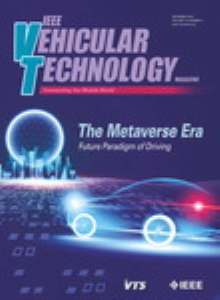DMDAT:基于扩散模型的数据增强技术,用于基于视觉的车载网络事故检测
IF 6.1
2区 计算机科学
Q1 ENGINEERING, ELECTRICAL & ELECTRONIC
引用次数: 0
摘要
本文章由计算机程序翻译,如有差异,请以英文原文为准。
DMDAT: Diffusion Model-Based Data Augmentation Technique for Vision-Based Accident Detection in Vehicular Networks
Generative AI (GAI) has garnered significant attention recently with the upsurge of ChatGPT and similar models. Research has shown that GAI technology has significantly contributed to several domains like healthcare, cybersecurity, industry 4.0, gaming, etc. GAI technology is also vital in vehicular networks and intelligent transportation systems. This paper presents a diffusion model-based data augmentation for enhanced vehicular network applications. The existing data augmentation techniques fail to modify the semantics of the images in the dataset. Addressing this, we propose a diffusion-based model for effective data augmentation. The augmentation technique involves feeding a randomly generated prompt (covering several image features like weather, lighting, background, visibility, and surface) along with canny edge features of an existing image to a diffusion model to generate an image with desired features. We used a vision-based accident detection dataset and a MobileNet-based deep learning model to understand the efficacy of the proposed data augmentation technique. Our experimental analysis indicates the proposed data augmentation technique improves the performance notably (3%).
求助全文
通过发布文献求助,成功后即可免费获取论文全文。
去求助
来源期刊
CiteScore
6.00
自引率
8.80%
发文量
1245
审稿时长
6.3 months
期刊介绍:
The scope of the Transactions is threefold (which was approved by the IEEE Periodicals Committee in 1967) and is published on the journal website as follows: Communications: The use of mobile radio on land, sea, and air, including cellular radio, two-way radio, and one-way radio, with applications to dispatch and control vehicles, mobile radiotelephone, radio paging, and status monitoring and reporting. Related areas include spectrum usage, component radio equipment such as cavities and antennas, compute control for radio systems, digital modulation and transmission techniques, mobile radio circuit design, radio propagation for vehicular communications, effects of ignition noise and radio frequency interference, and consideration of the vehicle as part of the radio operating environment. Transportation Systems: The use of electronic technology for the control of ground transportation systems including, but not limited to, traffic aid systems; traffic control systems; automatic vehicle identification, location, and monitoring systems; automated transport systems, with single and multiple vehicle control; and moving walkways or people-movers. Vehicular Electronics: The use of electronic or electrical components and systems for control, propulsion, or auxiliary functions, including but not limited to, electronic controls for engineer, drive train, convenience, safety, and other vehicle systems; sensors, actuators, and microprocessors for onboard use; electronic fuel control systems; vehicle electrical components and systems collision avoidance systems; electromagnetic compatibility in the vehicle environment; and electric vehicles and controls.

 求助内容:
求助内容: 应助结果提醒方式:
应助结果提醒方式:


